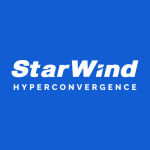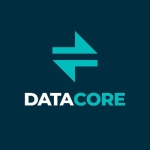Valuable Features
That my team can manage it. The server guys can actually manage the storage on their own. It was easy for them to learn to use the console and provision the storage quickly.
It was a long, painful process to get storage from the storage team and having to go through a lot of paperwork and processes, where now we can do it on our own quickly and as needed.
Improvements to My Organization
It's easy to set up, easy for my team to manage, the tools are pretty easy to learn, and it's important for us to be able to provision storage quickly in my environment, so as soon as we get a new node in, we can get it up and running very quickly, provision it, immediately use the storage.
The only issue that we have, occasionally, is bonding the NICs sometimes is problematic. It could be our environment. We have the Cisco Nexus infrastructure, and sometimes the nodes just don't want to bind. We have all kinds of problems with it, and we have to call a ticket in, and the product guys to help us figure out what's going on. It happens occasionally, it's not like, every time, it's just every once in a while.
Room for Improvement
The only thing that comes to mind was we had some issues with once we used up storage and then moved it out and had empty, white space areas, but getting that storage back is a long, painful process. You actually have to run a manual command line on each LUN individually to reclaim the storage.
Making it easier, automated, or being able to do it right from the console would be a great benefit because right now, again, we have to go to a command line and issue that for LUN, there's hundreds of LUNs, so it takes a very long time to go through that process.
Stability Issues
Latency is one of the things that our vROPs all the time, complains about the latency for that environment. We don't have good visibility to find out what's really causing it, what's underneath the problem. That's kind of been a sticking point that we're going to look into, but definitely vROPs are always complaining about latency from the StoreVirtual LUNs.
Scalability Issues
Scalability is one of the reasons why we got it. Now, there is a limitation on how many nodes you can have on each measurement cluster, so we have to kind of figure that out - what the best number is to have on each one.
Customer Service and Technical Support
We've had challenges, especially with opening tickets. Waiting for someone to get back to us can be a huge amount of time. We do have proactive services, so sometimes I have to pull those guys in to help escalate a ticket just to get some attention to it.
Initial Setup
I would say it is medium complex. I know I had one guy that understood it, he left the company, and didn't leave good documentation. We got a new node in and it took my guys a little bit to figure out how to get it set up. It's not like it's intuitive, but it's a process. It's not super complex, but once you do it and document it properly, then it's fairly straightforward.
Other Solutions Considered
We did go through an evaluation process. It was quite a few years ago. There was definitely competitors to StoreVirtual, actually, it was LeftHand at the time, when we made the decision to go with the product. We've stuck with it since and nothing has come up that has challenged that to make us rethink yet. There was definitely Dell, and as it was a number of years ago, I can't think of any other.
It wasn't EMC, but I think it was a NetApp product, because they do iSCSI as well, but again, then that would fall back onto the storage team and we want it to kind of stay away from that.
Other Advice
I would say, number one spend time to understand the product, to get the proper training or the people involved when you bring it in. Make sure it's the right product for what you're trying to solve. It's not a take care of any type of storage problem, there's no specific use cases that you want that it's good for.
Like I said, for the virtual environment, it does great for VMware, Hyper-V, whatever you want to use that type of storage for. Then it's just quick, easy storage if you need it for a file server, it would be good for that. You wouldn't want to use it for a cluster or a high I/O thing, but for the virtual environment and storage that's not dependent on high I/O, it would be a good fit.
Disclosure: My company does not have a business relationship with this vendor other than being a customer.










My update for 5/31/2016:
Current Config:
Our Horizon View, VMware, Atlantis, ProfileUnity, Liquidware, and McAfee Move (Agentless) software versions are generally the same. Slight version upgrades. Our big change for the first half of 2016 is that we purchase our first CS250-HC Hybrid (2 SSDs). Logon times have improved 40 to 45 seconds. The VSA for the CS250 is on a separate cluster since the CS240 has such different storage requirements. we are now just under 100 VDI users and quickly deploying now that the new hardware is in place. 400 UDI users by the end of 8/2016.
We still planning a 2nd half 2016 DR deployment, DMZ, and load balancers.
Biggest Hurdles:
Same as before - Training the helpdesk